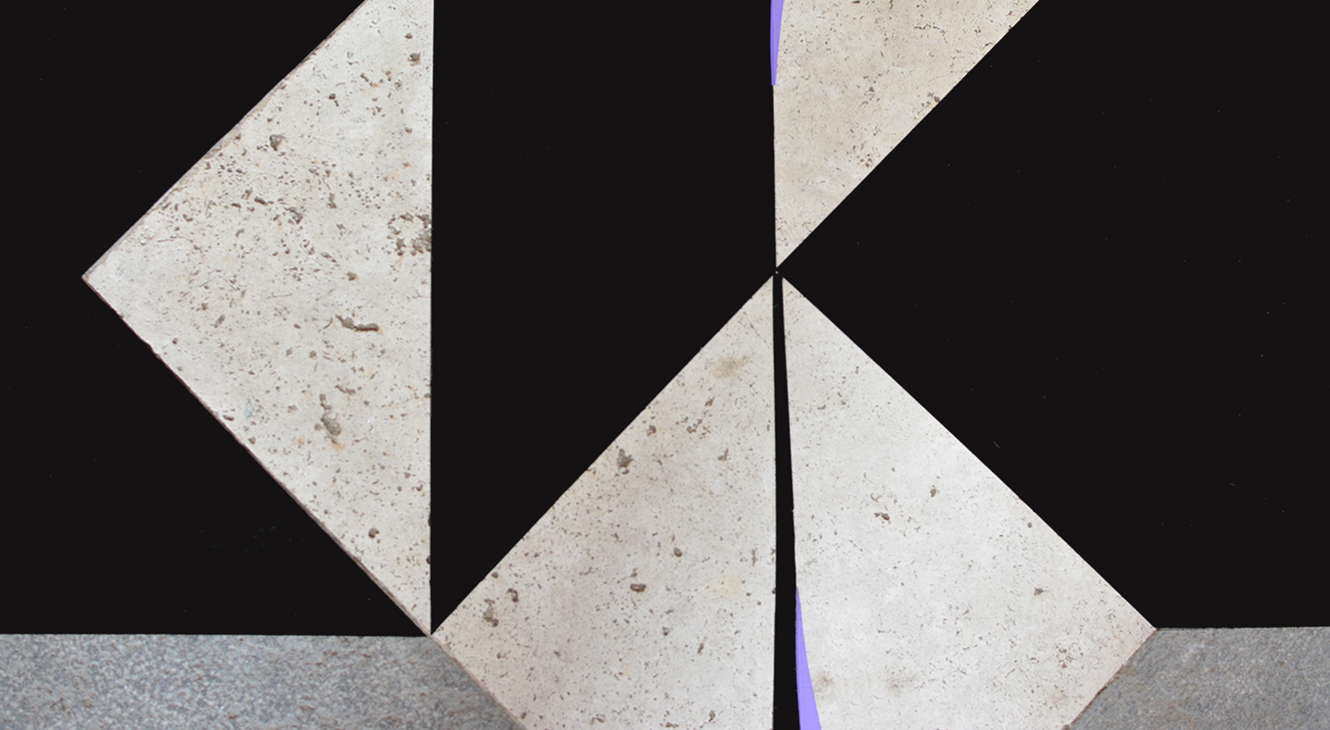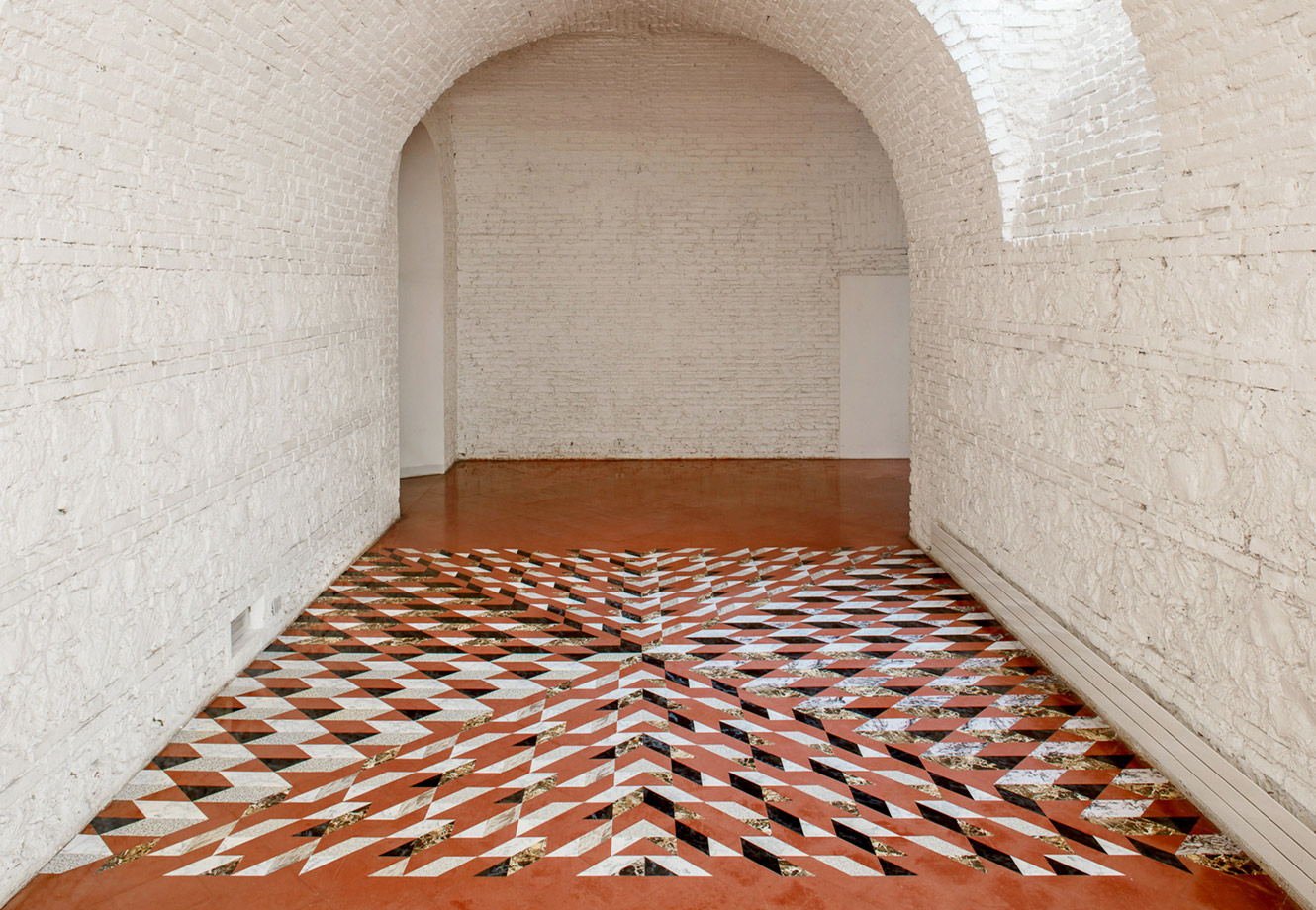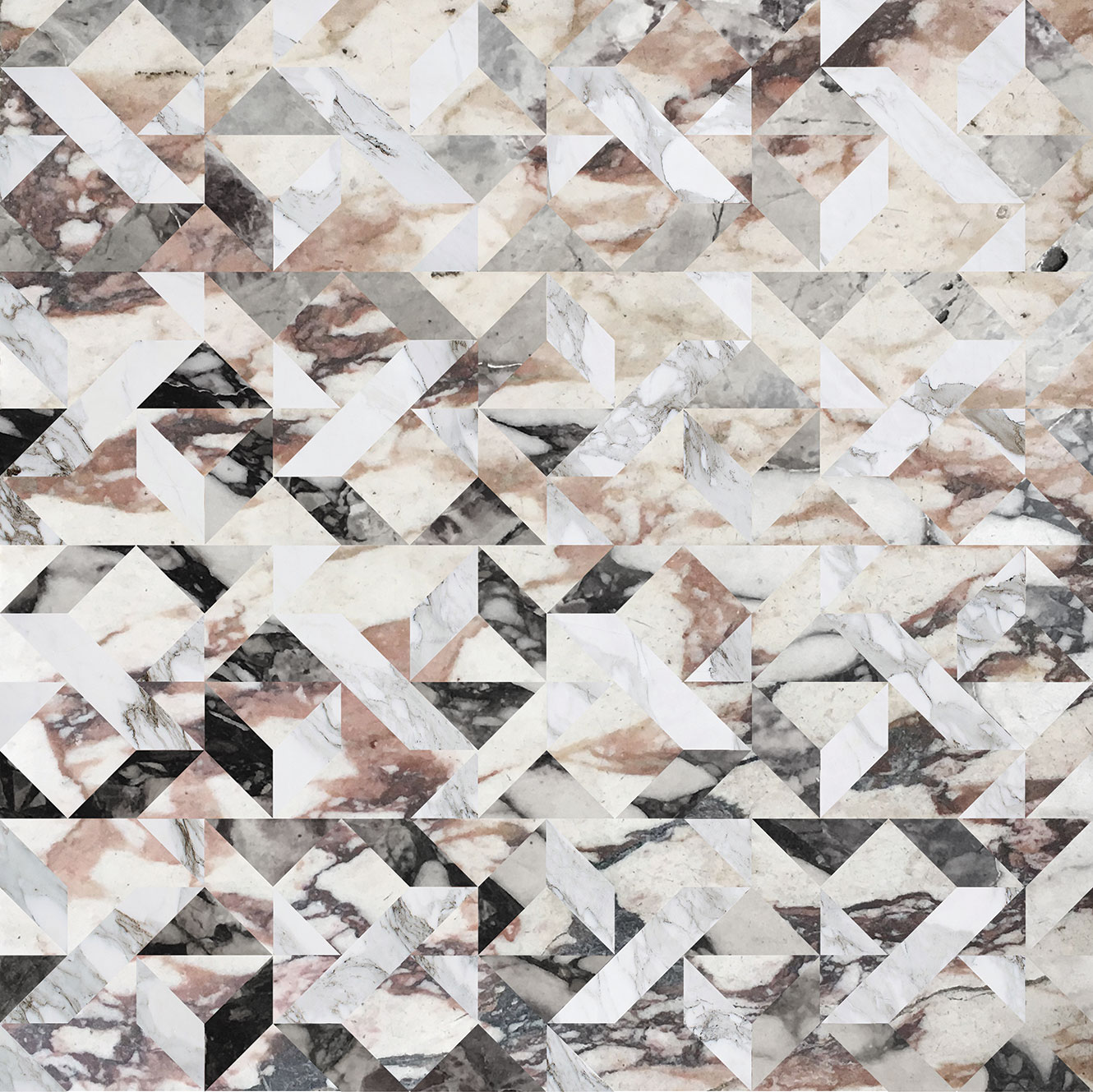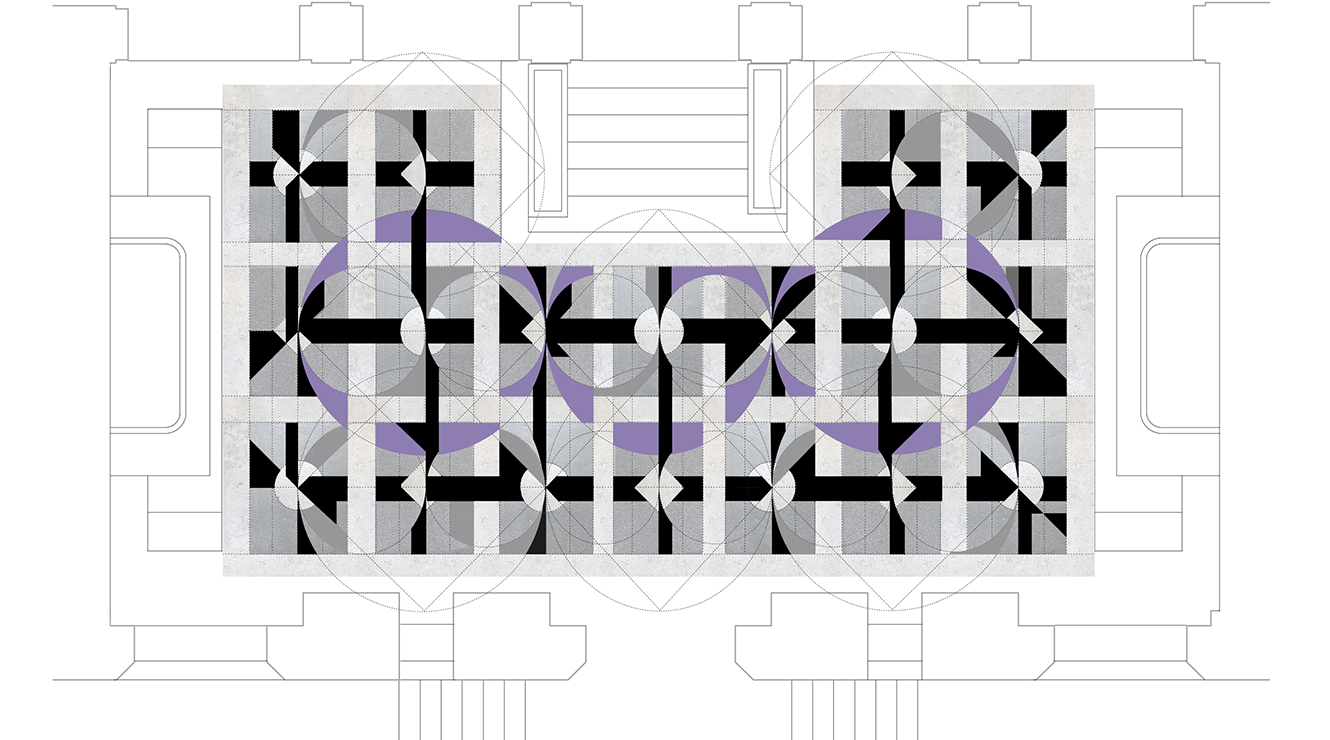Layered geometries, interwoven histories
For architect Bryony Roberts, a stay in Rome prompted meditations on pattern and movement.
April 26, 2018

Bryony Roberts. Primo Piano, detail of the visual oscillation created from newly adhered vinyl shapes onto existing patterned travertine and peperino stone, American Academy in Rome, 2016. Credit: Bryony Roberts
An interview with Bryony Roberts, a recipient of the 2018 League Prize.
Bryony Roberts’s practice focuses on activating and transforming existing architecture. During a Rome Prize fellowship, she developed projects exploring the geometries and materials used to create flooring in the American Academy in Rome building and the Michelangelo-designed Piazza del Campidoglio.
The League’s Catarina Flaksman and Antonio Huerta spoke with Roberts about her work.
*
Catarina Flaksman: Can you talk about your project at the American Academy in Rome?
Bryony Roberts: When I arrived in Rome, I became very inspired by medieval art and architecture, and I spent a lot of time looking at medieval churches. The way that pattern was used to define space, often in tension with the architecture, was so incredible to me. There are fields of pattern and disjunctions in medieval spaces that create a spatial richness that I’ve never seen before—certainly not during my architecture education in a neo-modernist contemporary moment.
I’ve worked with historical architecture before, but I hadn’t really delved into pattern as an organizing logic until Rome. I started to identify patterns that could be multiplied, reoriented, or transformed so that you’d start to perceive an existing pattern and a new pattern simultaneously, creating a tension or visual oscillation between the two. I’d been thinking about perceptual simultaneity of past and present, existing and new, and this ultimately played out in the American Academy building.
Antonio Huerta: What did you want people who visit the space to experience?
Roberts: The building opened in 1914. It’s a beaux-arts structure with central hierarchical axes that directs people down the center rather than towards the corners or the edges, even though they were incredibly ornamented.
The project tried to direct attention in multiple directions and to multiply the paths of movement and awareness. In a way, the project choreographs new movement patterns.
Flaksman: You’ve written about the concept of intersubjectivity being important to your work. What does this term mean to you?
Roberts: For me, intersubjectivity is about the moments of overlap between different individual subjects. It’s a way of understanding cultural history and the world.
Assuming that we don’t have an objective, scientific, absolute understanding of anything, but that a completely subjective perspective doesn’t really help either, we become trapped in ourselves. So the moment when multiple subjectivities overlap is when we negotiate what we know of the world and what we value about history and architecture.
I’ve done a lot of collaborative projects working with performance, and the way this works in these cases is very explicit: I’m working with other people and asking them about their understanding of history or a place. But when I’m working with existing buildings, I feel that I am interacting with a previous author who had particular intentions regarding space.

In another part of the American Academy in Rome building, Roberts layered faux-marble contact paper on original floors made of marble and precious stones. Credit: Bryony Roberts
In this scenario, I do my best to understand a space. I can only understand it from my experience in the present moment, but I try to pick apart the original intentions. I then respond to that by layering on my own interpretation, creating these multiple phases of time and authorship.
Huerta: In a way, your understanding of intersubjectivity mirrors your fascination with geometries.
Roberts: Absolutely. They’re layered and simultaneous. It’s all coming from the same place, and I hope that comes across. The goal at the American Academy was to create moments of uncertainty which provoke the questions of, is this original? What did McKim, Mead & White do, and what was added? That ambiguity is very important to me.

A digital collage exploring complexity in material difference—in this case, various marble samples—from Roberts’s Rome residency. Credit: Bryony Roberts
Flaksman: One of your Rome projects was a collaboration with a dancer and choreographer. How did you start to merge geometry and performance?
Roberts: I’ve done a few performance projects which were about the push and pull between bodies and the architecture surrounding them. I’m interested in bodies re-drawing, re-making, and therefore changing architecture. It’s about a response to underlying systems of order and geometry.
Flaksman: It’s so interesting how you went from medieval studies to contemporary dance, and then found a way to combine them.
Roberts: I think they’re very related. The medieval period was a moment of such cultural fusion, and with it a sharing of geometries from Christian, Islamic, Jewish, and other influences. In a way, it is a model for a layered complexity. It’s become a model of design for me.

Roberts collaborated with dancer/choreographer Melissa Lohman for a 2016 performance in Rome’s Piazza del Campidoglio. Credit: Claudia Pajewski
Huerta: How do you plan to explore geometries in the future?
Roberts: I have several things brewing. I am continuing to work on large-scale installations, but I would really like to work on permanent structures using these ideas. I’m definitely aiming to have a large-scale permanent realization.
My framework isn’t just for graphic patterns, but also works in thinking about existing structural systems. It can be very architectural too. This mindset can be multiplied and re-figured to create ambiguity or tension between multiple periods of time.
My dream model for my practice is working at a range of scales and of permanence, encompassing ephemeral projects, cultural history projects, and architectural projects that respond to an existing site. There are unique idiosyncrasies and patterns that can be applied to something as pragmatic as a load-bearing structure.
What’s important is the ability to multiply, reorient, and reconfigure in response to both the physical structure and the way people move in the space, which I think of as being another interesting pattern.
Interview condensed and edited.
Explore
The stereotomy of complex surfaces in French Baroque architecture
Hubert Pelletier describes the complex and beautiful structural surfaces of French Baroque architecture. 2009
Re-reading ornament: Textures in Islamic Spain
Fiyel Levent describes an art and architecture of tolerance from medieval Andalusia.
Lina Bo Bardi’s return to Salvador
Angela Starita discusses the architect's (mostly unrealized) plan to restore the historic city center of Salvador, Brazil.




